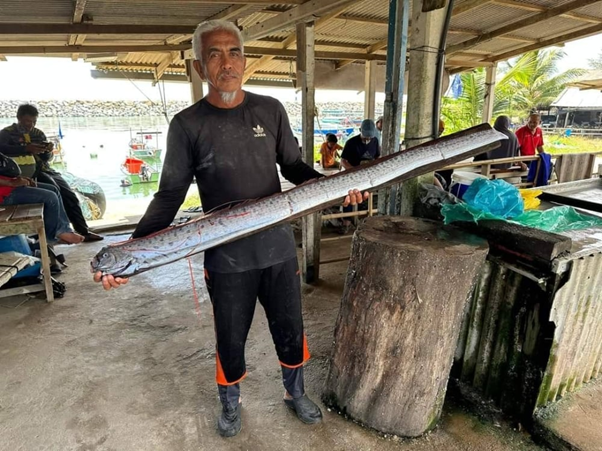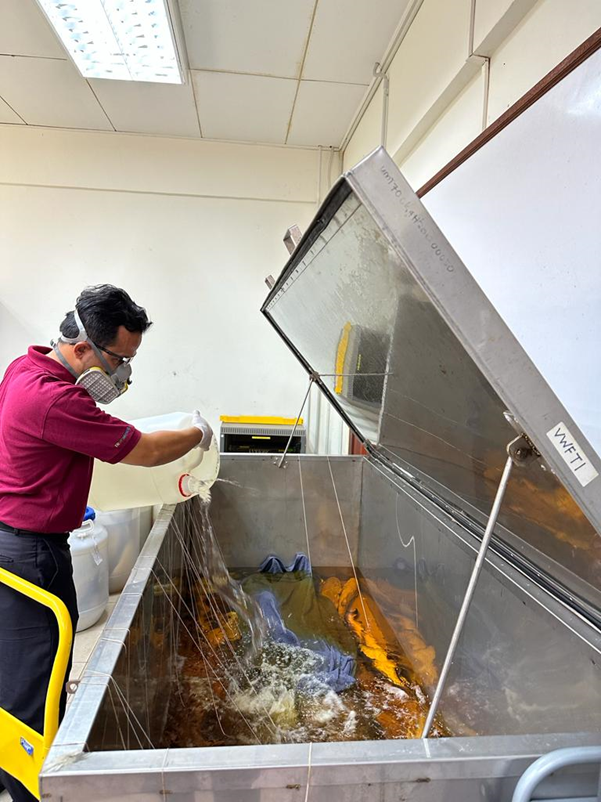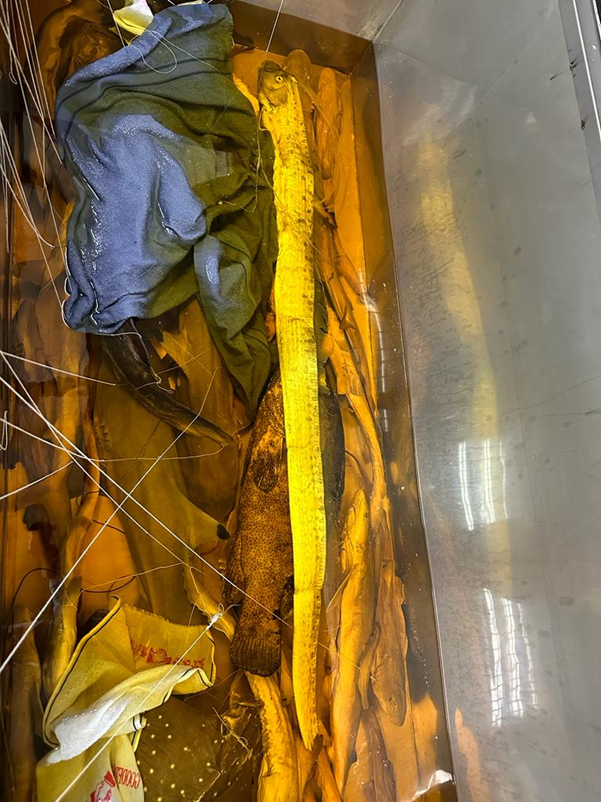
By Ahmad Fakhrurrazi Mokhtar
The scientific community is buzzing with anticipation following the astonishing oarfish discovery by a local fisherman, Harun Jusoh. Beyond the breathtaking images of this rare marine creature, there is a wealth of scientific knowledge of the ocean’s mysteries awaiting.
Due to its deep-sea habitat, oarfish holds a unique place in marine research with several potentials. Thus, every encounter holds a priceless prospect to research its biology, behaviour, and ecological importance.
The unusual appearance of the fish caught by Harun first intrigued the local fishermen. Realising the significance of this discovery, some urged the fish to be handed over to UMT for extensive study. The oarfish was handed over to Noratikah Ab. Manaf, of the South China Sea Repository and Reference Centre (RRC), a subset of INOS. Despite some suggestions to sell the fish, Harun noted that his action was motivated by a desire to enhance our aquatic ecosystems’ understanding. He further noted, “While I may sell the fish for a high price due to its rarity and demand, I sincerely believe in enabling UMT to benefit from this unique specimen for research purposes”.
We are extremely honoured to recognise the contribution of our local community, which deserve to be named as our citizen scientist. This discovery highlights the symbiotic link between local knowledge and academic competence, allowing for exceptional learning and discovery. Azwarina Mohd Azmi Ramasamy, the RRC’s Senior Curator, provided an insight into the significance of the oarfish. Although this species is known to live in our waters, the discovery was uncommon due to its fondness for deep-sea settings.
Azwarina delved into the historical archives to reveal earlier experiences with this rare creature, including the 2012 sighting off the shore of Pengkalan Maras, the 2015 findings off the coast of Pulau Redang, and two sightings in Miri, Sarawak, in 2018 and 2020. Some of these preserved specimens have found homes in research galleries and museums, where they enthral visitors about the wonders of the oceans. INOS took the lead in performing a thorough post-mortem examination, leading to the five scientific questions below:
Stay tuned for updates as our experts explore the depths of information buried inside this intriguing oarfish.





Copyright © INOS | Institute of Oceanography and Environment | Universiti Malaysia Terenganu | 2024. All rights reserved.